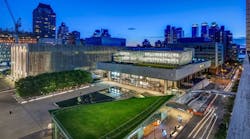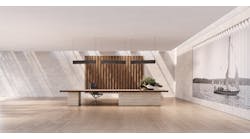Like many people who now live in a large city, I grew up in a suburb of a smaller city. It was essentially the countryside. It wasn’t quite farmland, but less populated than a city and surrounded by a great deal of undeveloped forest land. It was quiet, even in the daytime. You could hear the birds singing and the wind in the trees. You could even hear a soft drizzle of rain on the grass.
It was quiet because there was no other noise to compete with the sounds of nature. The closest large street was a local two-lane avenue with a speed limit of 35 mph. All the loud elements of a modern urban environment were far from my neighborhood. The largest nearby city center was 5 miles away and had a population of only 150,000 people at best.
Generally, rural areas tend to be quieter and urban areas noisier. The primary reason is traffic noise. The European Union (EU) considers environmental noise to be the leading cause of pollution, with noise due to traffic being the primary offender. Today more people live in cities and dense urban environments, including more than half of EU residents, with projections showing continued population growth in these areas.
Before the industrial age, the loudest noise in a city was probably the sound of a horse and carriage going down a cobblestone street and people talking. Many decades later we have cars, subways, buses, trains, motorcycles and airplanes. Essentially it has become a widespread use of mechanical devices, mostly transportation related. While the industrial revolution was a boon to mankind’s ability to grow technologically, it has become chaos for the urban soundscape and consequently our health and quality of life.
On the flip side, technology can have positive impact on the sound of our world. Maglev trains, hybrid cars and electric vehicles are examples of individual and mass transportation devices that are very quiet, especially in contrast to their predecessors. Quiet mass transportation has the benefit of moving many people at once while also being quieter than traditional trains running on steel tracks. Electric and hybrid vehicles have helped decrease traffic noise globally. However, in the U.S., federal mandates are putting noise back into electric vehicles to decrease pedestrian accidents and protect the blind.
Urban Soundscapes | Quality of Life and Health Impact
The health and well-being of over 50 percent of the worlds’ population is now impacted by the urban soundscape. As we discussed previously, loud and repeating noise causes high blood pressure, stress, anxiety and sleep disorders while quiet peaceful environments improve quality of life and consequently overall health and happiness. Designing a building, structure or city has such great potential to create environments that enhance our urban living experience, rather than spaces that chip away at our health bit by bit. In New York City, the most loved parts of Manhattan are the quiet gardens such as Paley Park or the public parks that are serene, peaceful and quiet like Central Park. It’s conception and construction are a legend in the history of both worldwide city design and landscape architecture.
Everyone intuitively and innately knows that loud, reverberant spaces can become agitating and stressful quickly. With little effort and great reward, both interior and exterior urban architecture can incorporate acoustics to integrate nature and mankind’s urban surroundings to create a new environment.
History
Landscape architects have long understood the benefits of trees, grass and plants as ways to control the acoustical soundscape, as well as the use of earth and dirt as an acoustical isolator. Nearly all of Central Park is surrounded by an earth berm raised slightly above street level and blocking the sightline of the lowered park to control the noise of traffic from entering the park. In Paris water fountains are in most parks surrounded by acres of grass and trees, while in Rome, they are designed into large sculptures in traffic roundabouts that are called Piazza’s. The falling water creates white noise, effectively masking the sound of cars, trucks and busses.
Art + Acoustic
Many cities require a certain percentage of commercial project budgets to be allocated for city improvements such as “art in public places.” In the future, perhaps these art pieces can be designed for dual purpose: acoustic control of city noise and artistic inspiration. Apparently, the French and Italians understood centuries ago that parks and sculptures could provide artistic and acoustic beauty to their public spaces.
If the worldwide trend continues, 80 percent or more of the world’s population will live in cities and urban environments within the next 30 years. It seems a natural that the design of these complex urban settings can integrate the latest technology and design talents and create a new, quieter, more green places where man and nature can exist together with inspiring designs, visually, acoustically and architecturally.
Solutions
Tried and true solutions for creating holistic urban soundscapes that sound more like the country than that of a train station include:
- Water features create both an artistic piece or architectural element while masking city sounds and adding humidity to dry areas.
- Grass, trees, ivy and drought resistant plants create oxygen, soften high frequency reflections and paint a landscape picture more like nature and less like a concrete jungle.
- Earth rooftops double as public park spaces and control ambient noise reflections from the city, while providing a touch of nature in an otherwise concrete environment.
- Multifaceted building facades help decrease noise reflections between tall structures, and integrating transportation hub design with city planning improves noise control in mass transportation areas of cities.
Today and Tomorrow
By the time nearly everyone on the planet lives in a city, it will be too late to retrofit everything to sound better. As with many things, the evolution of a city takes time, one building project at a time, so let’s start now. The EU has already been working on the issue of environmental noise control for many years, while here in the U.S. noise control and soundscaping is rarely of concern and barely enforced.
Every day people are realizing the physiological impact of auditory stress and fatigue. Automotive traffic, trains and airports all increase noise at a level that directly cause cardiovascular stress, cognitive dysfunction and learning disabilities. The good news is that architecture and city planning are beginning to implement more acoustic design into our urban world. Creating quieter urban soundscapes will improve our quality of life by decreasing stress, lowering blood pressure, relieving anxiety, improving sleeping patterns and overall improving both physical and psychological health.
Acoustics is incredibly fun. As the science underlying all of sound, it brings us music, language and a wide world of intriguing sounds. It can teach us to care for our health and improve our quality of life in many artistic and fascinating ways.


